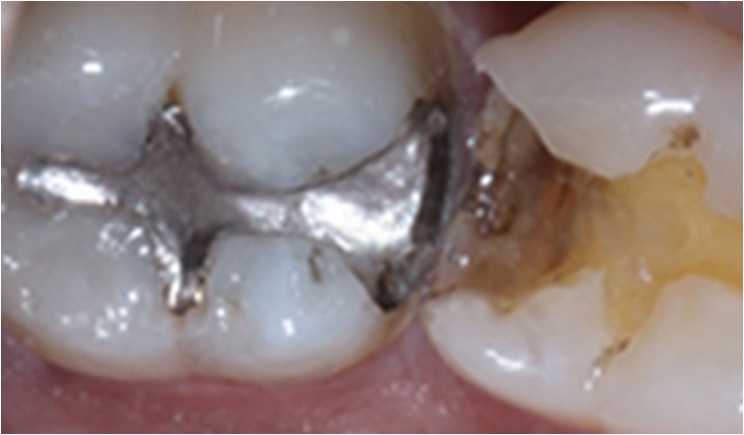
Paolo Brogneri, BChD, is a biological dentist in Camps Bay, Cape Town, in South Africa. He founded the Camps Bay Dental Studio 25 years ago. Concerned about public health and the environment, he co-established the South African Academy of Biological Practitioners (SAABP), which merges cutting-edge scientific research with ancient principles of detoxification and healing. It brings biological dentists and integrated medical practitioners together to take a stand on health and environmental issues.
Passionate about practicing safe mercury removal at his practice, Brogneri also became an early adopter of a South African amalgam capturing and recycling program that used amalgam separator technology from Dental Recycling International (DRI). Brogneri discusses why he decided to install amalgam separators in his practice as well as his thoughts about the future of amalgam recycling in South Africa in this Q&A.
Q: What is biological dentistry?
A: It’s synonymous with holistic dentisty, meaning that we take a multidisciplinary approach to general aesthetic dentistry, implantology, orthodontics, and healthcare in general. We look for the safest, least toxic way to treat patients.
Q: Why did you decide to become an early adopter of the amalgam capturing and recycling program?
A: I’m passionate about limiting human and environmental toxin exposure, whether those toxins are found in food, dental products, or elsewhere. Globally, dentistry releases 340 tons of mercury into the atmosphere each year, which is approximately 17% of total manmade mercury emissions. When you consider that the other emissions are from big corporations, including gold mines, coal combustion, the iron and steel industry, and others, it’s clear how large the role is that dentistry plays.
We are seeing a rise of neurotoxic chemicals and heavy metals in the environment, and the accumulation of these metals in the human body can pose significant health risks. The installation of an amalgam separator—a device that traps metal waste when amalgam restorations are removed so that it doesn’t end up in the environment—is the very first step any dentist can make to help alleviate the problem.
Q: South Africa is a signatory of the Minimata Treaty, which will establish regulations that require dental practices to install amalgam separators and recycle amalgam waste. What does that mean for South African dentists?
A: Yes, South Africa signed the global treaty on October 10, 2013, and that legislation will go into effect in two years. What this means is dentists will need to take a critical look at their role in the mercury tangle and educate themselves. They will need to be trained on safe amalgam removal from patients’ mouths. (SAABP will have established protocols and online video training on its new site, launching in early 2018.) They will also need to know how to safely discard mercury so that it does not find its way into sewage systems.
Q: What barriers do South African dental offices face when installing amalgam separators?
A: There’s the possibility that dental supply companies won’t have enough mercury separator in stock or that the technician won’t know how to install them correctly. That’s why we worked with DRI and Wright Millners, the oldest and largest dental supplier in South Africa. The Millners technician was done in less than 90 minutes, and I have had no disruption with my evacuation systems since the installation.
Q: Do you know of any services in South Africa that assist dental offices in capturing and recycling amalgam waste?
A: No. Currently, mercury waste leaves a dental practice in two forms: either in a normal trash bag or red waste bag, which is sent to a landfill or incinerated, or via untreated waste water. Both allow mercury to contaminate groundwater supplies. Amalgam separators, waste collection, and the recycling of this waste eliminate this entire cycle, helping to reduce manmade mercury emission.
Q: Do you predict that more dentists in South Africa will make the decision to become early adopters of amalgam capturing technology?
A: Yes. One of the benefits of being an early adopter of amalgam separators in South Africa is the knowledge that you are contributing to the health of the environment and, as a result of that, human health.
Once biological practitioners present the truth about mercury, the public will demand that dentists fulfill their obligation to deliver safe and effective amalgam removal. Dentists who embrace this, as well as the education available from SAABP, will be in a position to deliver this treatment confidently and effectively. In the end, they will end up benefiting when patients seek out dentists with the required skills and equipment, including an amalgam separator, who are committed to the safe collection and disposal of waste mercury.
Mr. Sussman is the founder, president, and CEO of Dental Recycling North America (DRNA) and of Dental Recycling International (DRI), which was created to operate in all markets outside the US. Some of the most renowned dental clinics in the United States, including the US Air Force Academy, the Cleveland Clinic, and the University of Colorado Dental School, have sought out DRNA’s 360° compliance solution for amalgam recycling requirements. He can be reached at mmsussman@drna.com.
Related Articles
What Every Dentist Needs to Know About the New Amalgam Regulations
What Dentists Need to Know About Installing and Maintaining Amalgam Separators
EPA Final Rule Requires Dentists to Use Amalgam Separators











